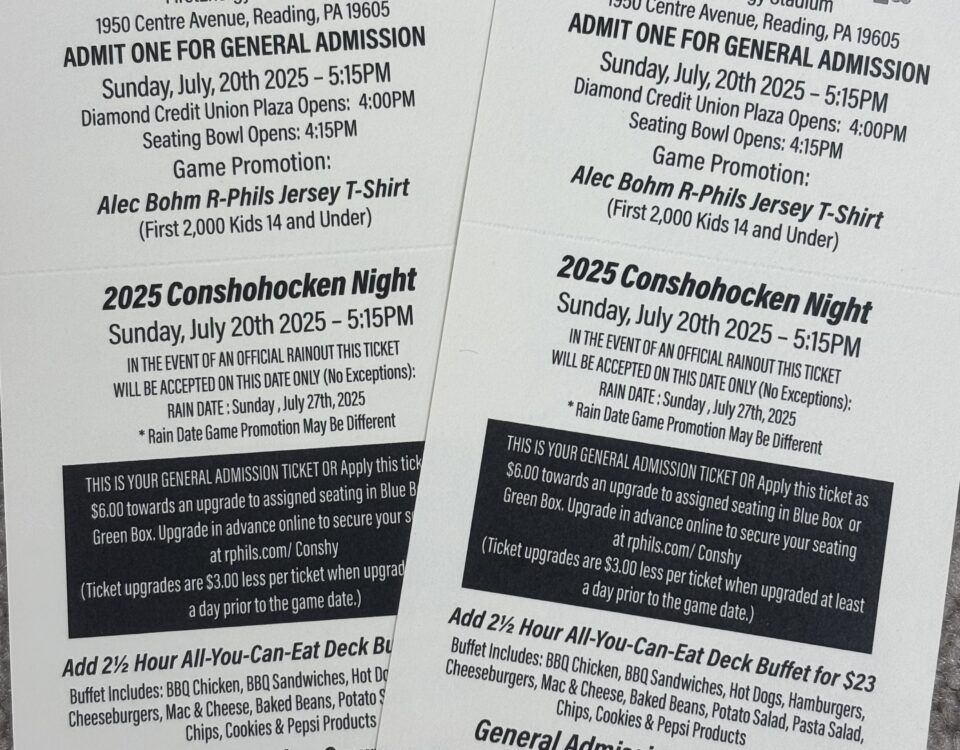
Do You Want to Support the Girl Scouts, but not eat the cookies? Here’s a way
January 30, 2023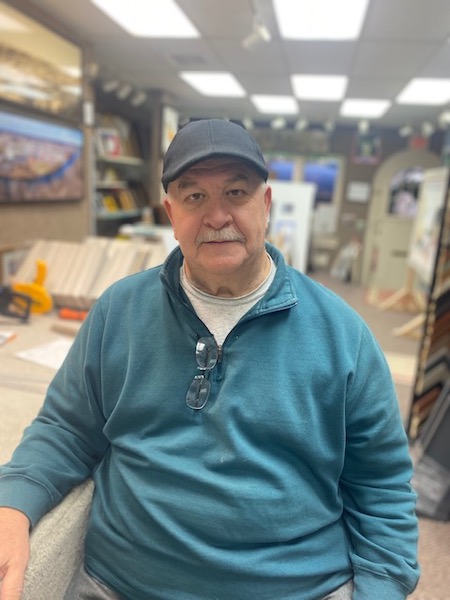
Conshy’s Own Frank Burton – Grand Marshall of THE Parade
February 16, 2023History of a House or Two, a Football Player and A Pioneer in Broadcasting
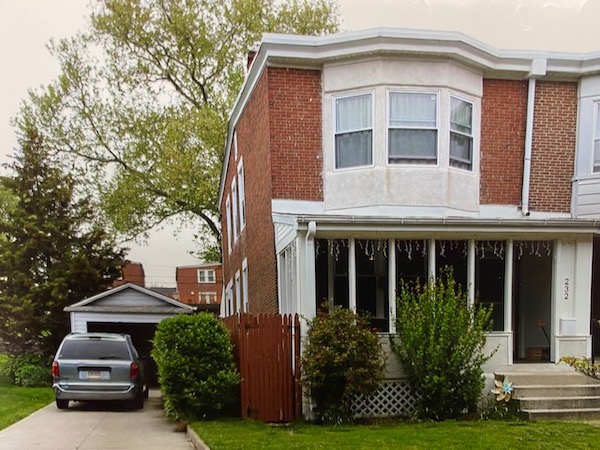
History of a House or Two, a Football Player and a Pioneer in Broadcasting
2/11/2023
History Of A House, or Two
232 East 10th Avenue—906 Fayette Street
He Was A World Class Athlete, She Was A Pioneer in the Broadcasting Industry
By Jack Coll
2-11-23
Editor’s Note: (This is one in a series of short articles on random houses throughout the borough of Conshohocken, enjoy)
Houses up-and-down the avenues and streets of Conshohocken are, well, today, just houses, but back in the early part of last century, say a hundred years ago many of these houses provided needed services to the community. Many of them were corner stores or mid-block stores, the living rooms of some of these houses doubled as pool rooms, barber shops, cigar stores, candy stores and doctors’ offices. On occasion there was nothing special about the house but something special about the resident who may have lived in the house for a period of time.
I thought it might be fun and interesting to point out a of few of these houses, that today are occupied by residents or businesses who I’m sure had no idea that their house was at one time something more than just a house.
This version of History of a House, or Two, centers around a couple of residents I’ve written about before, but felt a few residents might enjoy me connecting the dots that puts these two former residents into the same article.

The Victorian Colonial Revival style twin house located at 232 East Tenth Avenue along with the connected twin at 234 East Tenth Avenue were built just around the turn of last century in 1900. On November 30, 1901 John “Jack” McBride was born and lived at 232 East Tenth Avenue throughout the early part of his life.
McBride attended Conshohocken Schools at Third Avenue and Harry Street at the Hoffecker School and was part of the first graduating class at the new Conshohocken High School once located at West Seventh Avenue and Fayette Street.
At Conshy High McBride was a standout basketball player. In his senior year the basketball team was perfect during the 1918-19 season posting 21 victories without losing a game. Conshohocken High School’s early basketball teams were coached by the legendary William ‘Pop” Irwin. The teams two biggest victories came over Souderton with a 60-9 win and a victory over Quakertown with an un-heard of score in that era of 94-30. Johnny McBride led the team in scoring with help from his team-mates George Beaver, Harry Merkel, Charles Irwin, William Bate and Ralph Wentling.
Interestingly enough Conshohocken High School didn’t have a football team while McBride attended the school, Conshohocken High didn’t sanction a football team until 1923 and all home games were played at the community field located at Eleventh Avenue and Harry Street. McBride played a lot of “sandlot” football in Conshy, these were mostly “Pick-up” games played on vacant fields. One of the popular lots where McBride honed his football skills was located at the top of West Second Avenue and Forrest Street.
Perhaps the biggest encouragement to play football in his young life came while watching the Bob Crawford led Conshohocken Professional Football Team from 1914-1918 where they played their games at the Conshohocken Community Field located at Eleventh Avenue and Harry Street. The Conshohocken Professionals played in one of the East Coast leagues that was the precursor to the National Football League. (NFL)
The Conshohocken Professionals posted an undefeated record from 1914-1916 going 26-0 over the first three years. Those early teams would draw from 6,000 to 8,000 fans to the Community Field for home games and Conshohocken would charter several trains so the Conshohocken fans could attend the away games.
Conshohocken’s 1919 undefeated team photograph hangs in the National Football Hall of Fame on a rotating schedule as the Eastern United States Football Champions. The National Football Hall of Fame is located in Canton, Ohio.
So, in the fall of 1919 McBride packed his bags and left Conshohocken for Wyoming Seminary, in Kingston, Pa. McBride was given an opportunity to play organized football for the first time in his life at the preparatory school. The Wyoming Seminary was located in Wyoming Valley of Northeastern Pa., near the Susquehanna River and the city of Wilkes-Barre.
A year later McBride was starting for the Syracuse University football team as a half-back, fullback and quarterback. But what McBride excelled at was the art of the drop-kick. McBride finished second in the nation in scoring in his senior year to Heinie Benkert. McBride scored 90 points on 7 touchdowns, 11 field goals, and 15 extra points in his senior year. He was also the leading field goal kicker in the east and was considered the best triple threat in the league.
In his senior year McBride was an All-American at Syracuse and captured headlines across the country in 1923 and 1924, a week after he single-handedly won game after game for the Orangemen. In 1923, headlines read: “Syracuse Tramples Over State 10-0 Fullback McBride is Responsible For First Defeat of Nittany Lions.” Penn State was 5-0 until the loss to Syracuse, as McBride scored all ten points to knock coach Bezdek’s team out of the Intercollegiate Championship honors. Jack McBride was a hard runner and an accomplished drop-kicker who was able to kick field goals consistently from 40 yards on in.
McBride was also known for his passing ability from his fullback position, in an era when fullbacks, not quarterbacks, did most of the passing for their teams. The following year Syracuse had a rematch with Penn State. The Orangemen again beat State 10-0 and again McBride was the star. A Philadelphia paper stated that at one point McBride carried the ball 14 of 18 times. McBride scored the touchdown, kicked the point, and later in the game kicked the field goal. In two games against Penn State, McBride scored all 20 Syracuse points.
In 1923, Syracuse Head Coach Chick Meehan presented McBride with the team’s Most Valuable Player Trophy in front of the entire student body and called John “The greatest football player I’ve ever seen.” In 1924 McBride was named All-American. Syracuse Head Coach Chick Meehan would attend one of a number of Testimonial Dinners held for McBride in Conshohocken.
Several times in 1924 and 1925 a Testimonial Dinner in McBride’s honor was held in Conshohocken with sell-out crowds of three and four hundred residents in attendance each time. McBride was noted as a hometown hero who caried the Conshohocken name with him throughout the country.
In the spring of 1926 McBride married his hometown sweetheart Dorothy Davis, it was a beautiful ceremony held at the First Baptist Church where the Rev. Abner James Davies officiated.
Dorothy Davis McBride grew up at 906 Fayette Street and was the daughter of Frank and Mary (Hart) Davis. Frank owned and operated the F & J H Company which sold coal, ice and fuel oil from 355 East Elm Street.
Dorothy became a groundbreaking radio executive at R. C. A. in New York City during the 1930’s— 1940’s. Dorothy rose quickly thru the ranks at R. C. A. to become the head of programing for New York’s top broadcasting station in the 1940’s when females rarely held executive positions in the broadcasting industry. Who would have thought that when she married McBride and left Conshohocken for the Great White Way that she would have an office with gold letters on the door and hold such a responsible position for the nation’s leading broadcasting company.
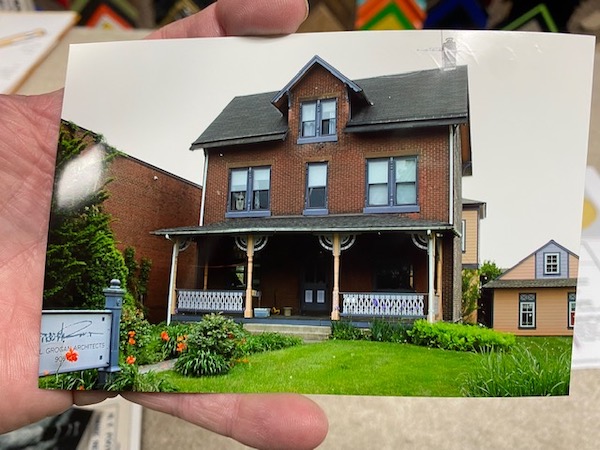
The building at 906 Fayette Street where Dorothy grew up is now owned by Jeffrey Grogan who runs a very successful architectural firm. The Victorian Italianate style two and a half story house at 906 Fayette Street was constructed in 1880, most of the houses along the 900 block of Fayette Street were built between 1880 and 1890. Members of the Davis family lived at 906 during the 1920’s thru the 1940’s.
Every time I walk or drive past 906 Fayette Street I think about Dorothy’s husband Johnny McBride, but I also remember Dorothy, who didn’t hang her hat on being married to a football star, she carved out a career all on her own, kinda reminds me of the many women living in
Conshohocken today, strong, committed and determined, ya gotta love them Conshy Girls.

McBride joined the New York Giants football team in 1925. It was the Giants inaugural season and the National football league was just three years old. At the professional level McBride was named First-Team All-Pro following the 1925 season. It was written that McBride was an excellent all-around player who could run, pass, punt, placekick and throw the ball well at a time when Fullbacks did most of the passing. The Giants finished the 1925 season in 4th place with an 8-4-0 record under Head Coach Bob Folwell.

McBride was the Giants first team captain, he threw the first touchdown pass in team history on November 1, 1925 in a 19-0 win over the Cleveland Bulldogs. He also recorded the first successful drop-kick for the point after touchdown and kicked the first field-goal in the history of the franchise.
In 1925 McBride joined the Giants at 5’11’’, 185 pounds, and yet led the Giants in scoring that year. McBride faced a number of great opponents that first year including the great Harold Red Grange and George Halas of the Bears. Halas would later become the owner of the Bears.
McBride went on to lead the team in scoring in 1925, 1926 and 1927 and was an excellent safety as he led the Giants in interceptions for several seasons.
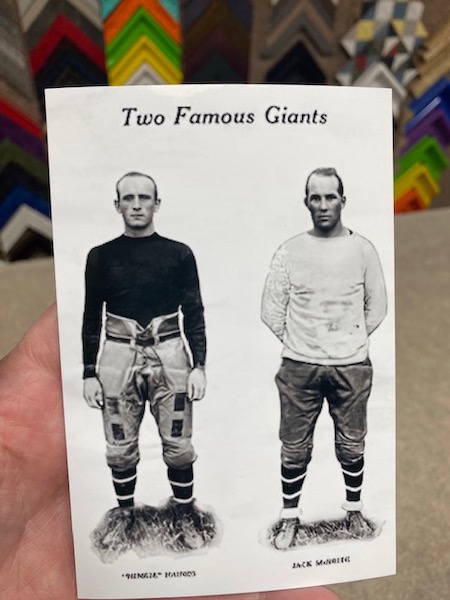
McBride was in good company on that inaugural team as the great Jim Thorpe was a teammate who ran out of the backfield with McBride.
Jim Thorpe was considered one of the most versatile athletes of the 20th century. He won the gold medal in the pentathlon and decathlon at the 1912 Olympic Games. The pentathlon consisted of the long-jump, javelin throw, 200-mitre run, discus throw and the 1,500-metre run. The decathlon normally made up of several team members, however Thorpe represented the entire United States Team competing in the in the 100-yard dash, which he could run in ten seconds, the 220 which he ran in 21.8 seconds, 440 in 51.8 seconds and the 880 in 1.57 minutes and the mile in 4.35 minutes.
Football proved to be his major sport having played for the Carlisle Indians from 1907-1915. (He left the Carlisle School in Pennsylvania in 1912.) He went on to play with the Canton Bulldogs from 1915-1917, the Bulldogs Township from 1919-1921, the Oorang Indians from 1922-1923 and the Independents of Rock Island in 1924.
In 1925, Thorpe joined the New York Giants Professional Football Team where he ran out of the backfield with John McBride. However, by the time Thorpe joined the Giants he was nearing the end of his career at nearly 40 years old and a couple games into the season Thorpe was injured. He was inducted into the College Football Hall of Fame in 1951 and the Pro Football Hall of Fame in 1963.
On a side note, a good friend of mine the late great Max Patkin, “The Clown Prince of Baseball” had told me a number of stories about Jim Thorpe. The two personalities had crossed paths a number of times in the early 1950’s, (Thorpe passed away in 1953 at the age of 64) It seems that by 1950 televisions had started to find its way into a great number of households across the country and Thorpe and Patkin were regular celebrities on these early entertainment shows. Patkin would do his baseball clown routine and was a hell of a dancer in his day competing on dozens of dance shows and contest.
Well, the two men were scheduled to appear on a television show in Chicago back in 1951, Patkin was scheduled to perform his famous baseball routine but forgot his oversized baseball glove. Sitting in the backroom with Thorpe he mentioned to Thorpe that he didn’t have a glove for his routine and Thorpe said no-problem that he had an old glove in the trunk of his car that he really doesn’t use anymore. The two walked out to Thorpe’s car and he produced a baseball glove and gave it to Max. When the show was over Thorpe told him to keep the Old glove, which Max did.
I had spent many an afternoon at Max’s apartment at the Valley Fore Towers in Upper Merion Township and later at his house in Downingtown. Max would often pull out these socks filled with autographed baseballs. He had balls signed by Mickey Mantle, Stan Musial, Satchel Page, Willie Mays, Roberto Clemente, Roger Maris and yes, he had one signed by Babe Ruth and often told me the story of him spending time with Babe. He would often re-hash the time he struck out Joe DiMaggio during a military baseball game, but rarely mentioned the 600-foot bomb DiMaggio hit off Max the following time to the plate but that’s another story. Then Max pulls out the baseball glove given to him by Thorpe back in 1951.
I offered to buy the glove from Max, but he didn’t want to part with it. I told him on several occasions to name a price. I didn’t want the glove to sell, I wanted to frame it and hang it in my shop. I didn’t need a certificate of authenticity, or any other proof that it was Thorpe’s glove, I knew it was, I had the glove on my hand pounding my fist into it. Max offered me a couple of signed balls, I said no-way, I wanted to buy the glove, the final time I ever talked to Max before his passing he said He’d think about it.
Anyway, enough about Max and back to Thorpe and McBride. It should be noted that Thorpe also placed 4th in the high jump and at the Olympics and 7th in the long jump, the 1912 Olympic games were held in Stockholm, Sweden.
One other side-note, Jim Thorpe was a rare athlete having played three professional sports, he played baseball, football and basketball. Other talented athletes who played two professional sports included Bo Jackson and Deion Sanders among others. However, let’s not forget about Conshohocken’s own Whitey Mellor, a standout athlete in the 1930’s and 1940’s. Whitey signed a contract to play for the Philadelphia Eagles, I read his contract while visiting Whitey before he passed away. The Eagles contract stated that he’d be paid $100 per game and guaranteed him a job in the off-season pumping gas at a Philadelphia gas station. Whitey also signed a contract with the Philadelphia Phillies baseball club and played professional basketball in Canada. When the great-ones are mentioned like Thorpe, Jackson and Sanders, we really should mention Mellor in the conversation.
The 1926 Giants team again finished with eight wins while posting an 8-4-1 regular season record. The team played one post season game against the Philadelphia Quakers, the Giants won 31-0.
McBride led the Giants in scoring in 1926 with 5-touchdowns, 15 extra points and a field goal.
During the summer of 1926 it was announced that McBride would be appearing in a feature film called “The Quarterback.” The movie starred Richard Dix, Esther Ralston, Harry Beresford and Larry Stevens. While McBride wasn’t one of the featured stars in the movie, he did play a major role along with several of his New York Giants Team-mates. It was said that McBride provided the football technique for the film along with his team-mates including Joe Alexander, Bonar and Carney.
The “Quarterback” made by Paramount Pictures was released on October 11, 1926 and was later shown at the Riant Theatre. McBride can be seen in the movie along the sidelines with the football team and several other scenes in the movie. Immediately following the filming of the movie McBride reported to the Giants training camp with the rest of his team-mates in Scranton Pa. to prepare for the opening of the season on September 24.
For a number of years McBride and his wife Dorothy would travel to Winter Haven, Florida in the off-season where he embarked in the construction business and erected a number of homes in Winter Haven.
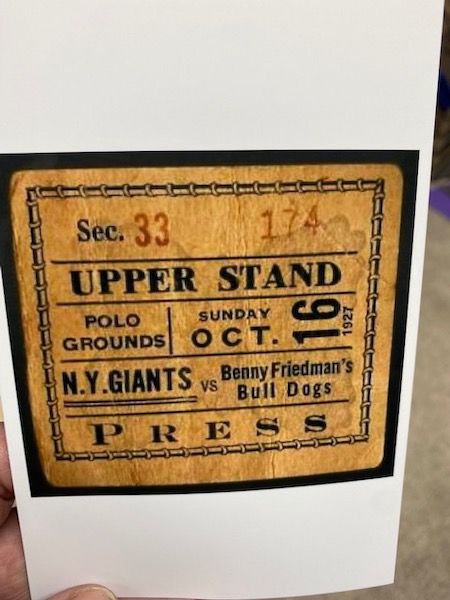
In 1927 McBride helped lead the Giants to their first championship season with a 11-1-1 record leading the 12-team league. The Giants posted 10 shutouts and only allowed three opponent touchdowns while outscoring their opposition 197-20. McBride had a little help from a couple of Hall-of-Famers including Steve Owen and Carl Hubbard, Owen went on to coach the Giants for 24 seasons and won two championships of his own in 1934 and 1938.

Once again McBride led the team in scoring with 6-touchdowns, 15 extra points and a pair of field goals. A familiar face to McBride was the Giants Head Coach Earl Potteiger. McBride and Potteiger both had Conshohocken ties. McBride having been a resident and watched Potteiger playing for Bob Crawford on the early undefeated Conshy teams. Potteiger was one of a few Giants coaches in their nearly one hundred years of existence to lead the Giants to the playoffs in his first year of coaching. Potteiger not only led the team to the playoffs but captured a championship in his first year.
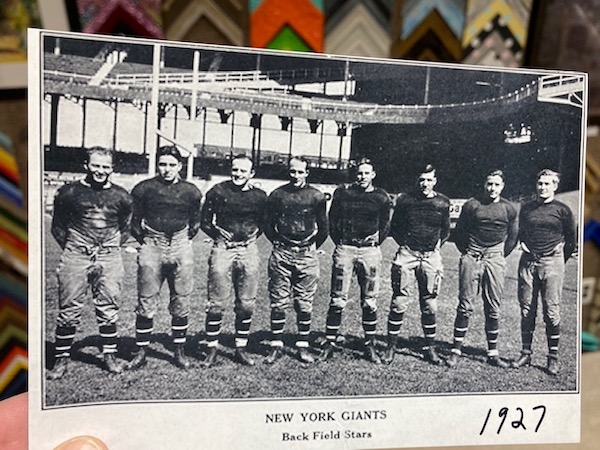
After the 1928 season McBride signed on with the Providence Football team for a short stint playing one season with them. In 1930 he signed with the Brooklyn Football team for the 1930, 1931 and part of the 1932 season before jumping back to the New York Giants squad where he played a full season in 1933 but in 1934, he saw limited action with the Giants as they recorded their second league championship.
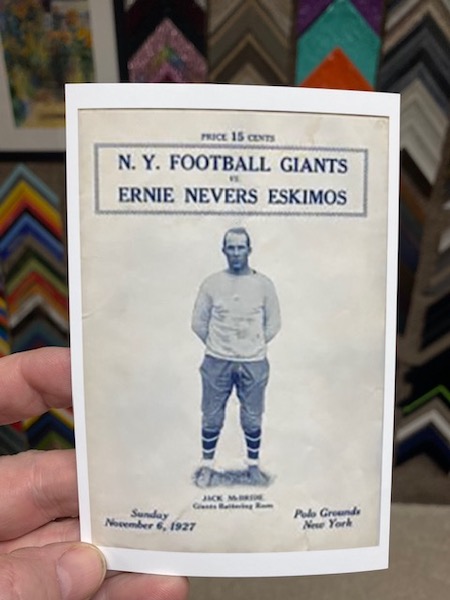
McBride maintained his connection with pro football after his career in the NFL, serving as the player/coach of the Paterson Panthers (later of the American Football Association) in 1935 and as coach of the New York Yankees of the second American Football League and the New York Yankees of the third AFL, in 1940-1941.
Upon retirement from football McBride enlisted into the Marines in an effort to serve and protect. Within a short time, McBride rose to Captain and was stationed in New Guinea for about a year and a half, New Guinea was one of the most horrific battlegrounds of World War II. Dense jungles, intense heat, disease, and fierce Japanese resistance that lasted from March 8, 1942, when Japanese forces first landed on the island, to the end of World War II in the summer of 1945.
From there I lost track of McBride for a number of years but he turned up in Tonopah, and Goldfield, Nevada where he became a silver mining prospector. McBride was the President and Treasurer of the United States Lithium Company. McBride co-owned the company with William Cox, Cox was a former owner of the Philadelphia Phillies back in the 1940’s after he took over for Conshohocken’s Gerald Nugent. Cox’s term was short lived as Phillies owner as he was a heavy gambler. The lithium company was sold in 1964. It looked like McBride split his time between New York as he did a lot of work on Wall Street and Nevada.
Over the past year I’ve been communicating with Richard Bozzone, a fellow from Connecticut, who has also been researching the life of John McBride, and he sent me an obituary for “John “Jack” McBride” dated October 14, 1966 from Tonopah, Nevada. The obit stated that McBride passed away at the Nye General Hospital and also stated that he had been a frequent visitor to Tonopah, Goldfield and surrounding areas over the past several years and traveled extensively throughout the west. The obit further explained that McBride was given graveside services by the Veterans of Foreign Wars and was buried at the Tonopah cemetery.
So, when Donna and I took a cross Country vacation in our RV this past summer, (We hit the road for about six weeks) we put Tonopah and Goldfield, Nevada on our places of interest.
We spent two days in Tonopah giving me time to track down any information I could on McBride. I visited the Tonopah Library, Historical Society, the new Tonopah Cemetery, a book store and a mining museum, and that was on the first day, and found nothing pertaining to McBride. On the second day I was out early and headed back to the cemetery to see what I could find out, after an hour or two I headed for the Tonopah County Township building, who happen to have all the cemetery records where I was informed that no John or Jack McBride was buried in their cemetery. I produced the obit stating that he was buried there and they remained very clear that no McBride was buried in their cemetery. I stopped at another mining museum looking for any information or sign of McBride but the visit produced nothing. I later went to the Tonopah Veterans of Foreign Wars Post, I stopped three different times during the day but nobody was home. A few phone calls and a letter also produced no reply.
We left Tonopah and headed to Goldfield, a town about twenty-five miles away to see what research might be available on McBride to which I found none. I found Goldfield to be a very interesting town, they had what was called the “International Car Forrest” They had about two dozen cars buried head first in the ground, ala Cadillac Ranch style. It’s worth looking up, I spent about an hour just taking photographs of the place.
So, all I have on the later part of McBride’s life is that he was a mining prospector, died in the fall of 1966, and after checking in with officials at the Riverside Cemetery in Norristown, and Tonopah Cemetery in Nevada, I have no idea where he is actually buried.
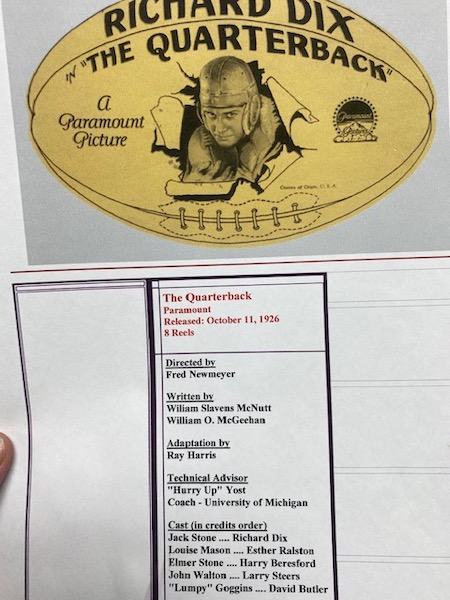
After Dorothy moved back home, I think sometime in the late 1970’s or early 1980’s. She lived at Sherry Lake Apartments on Butler Pike, for a number of years. Dorothy passed away on January 30, 1998, at the age of 95, she was living in Dade County in South Miami. Jack and Dorothy had two children.
Editor’s Note: two paragraphs of this article pertaining to McBride’s college career was written word-for-word from an article that appeared under a heading that read:” Molly Tells” a columnist that would print all the interesting local gossip of the borough in the Conshohocken Recorder newspaper.
I thought our Conshystuff audience would enjoy a good local football article on the eve of the Super Bowl involving our Philadelphia Eagles. For every Eagles fan in reading distance, “GO EAGLES”
Photographs above include:
232 East Tenth Avenue, the house where John “Jack” McBride grew up in from 1901-1919
906 Fayette Street, the house where Dorothy Davis grew up in
Jack McBride posing, to throw the football as a New York Giant in 1925
The starting line-up for the 1925 New York Giants Football Team. Conshohocken’s Jack McBride is standing third from left in the photo while the great Jim Thorpe is standing next to him second from left.
Two famous New York Giants in 1927 included Hinkey Haines on the left and Jack McBride on the right.
A Press Pass for October 16, 1927 when the Giants played the Benny Friedman’s Bull Dogs at the Polo Grounds. In 1927 the Giants w on their first championship under head coach Earl Potteiger.
A team photo of the New York Giants 1927 championship team who posted a 11-1-1 season
A 1927 photograph of the New York Giants backfield stars that included Jack McBride fourth from left.
A program cover from 1927 highlighting Jack McBride
A reproduction of the movie poster advertising the movie “The Quarterback.”

